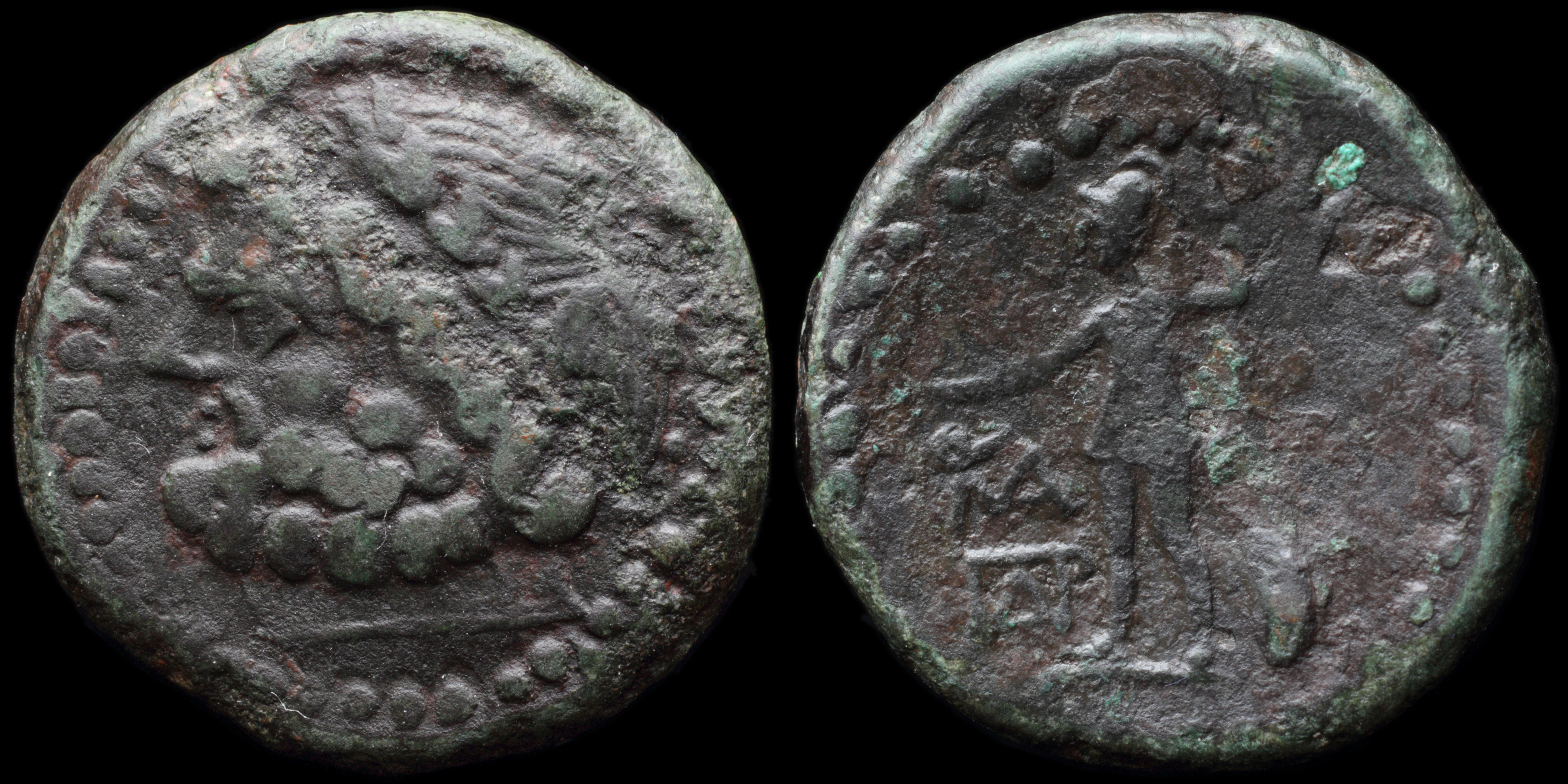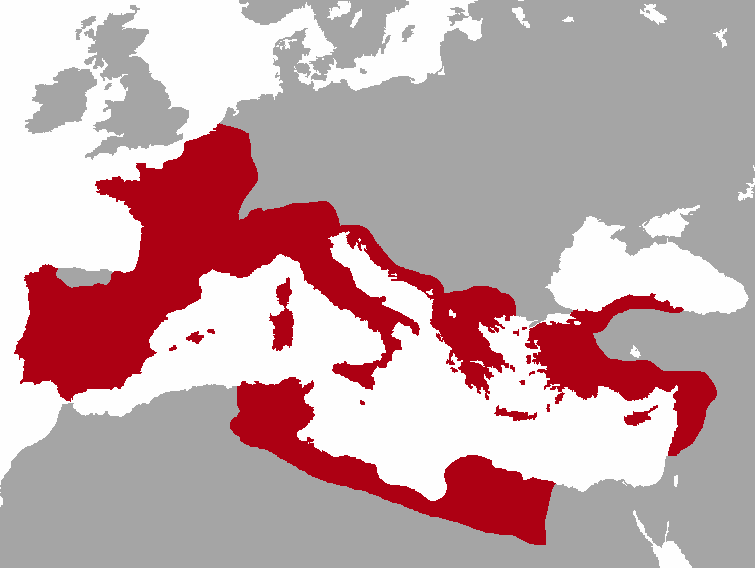
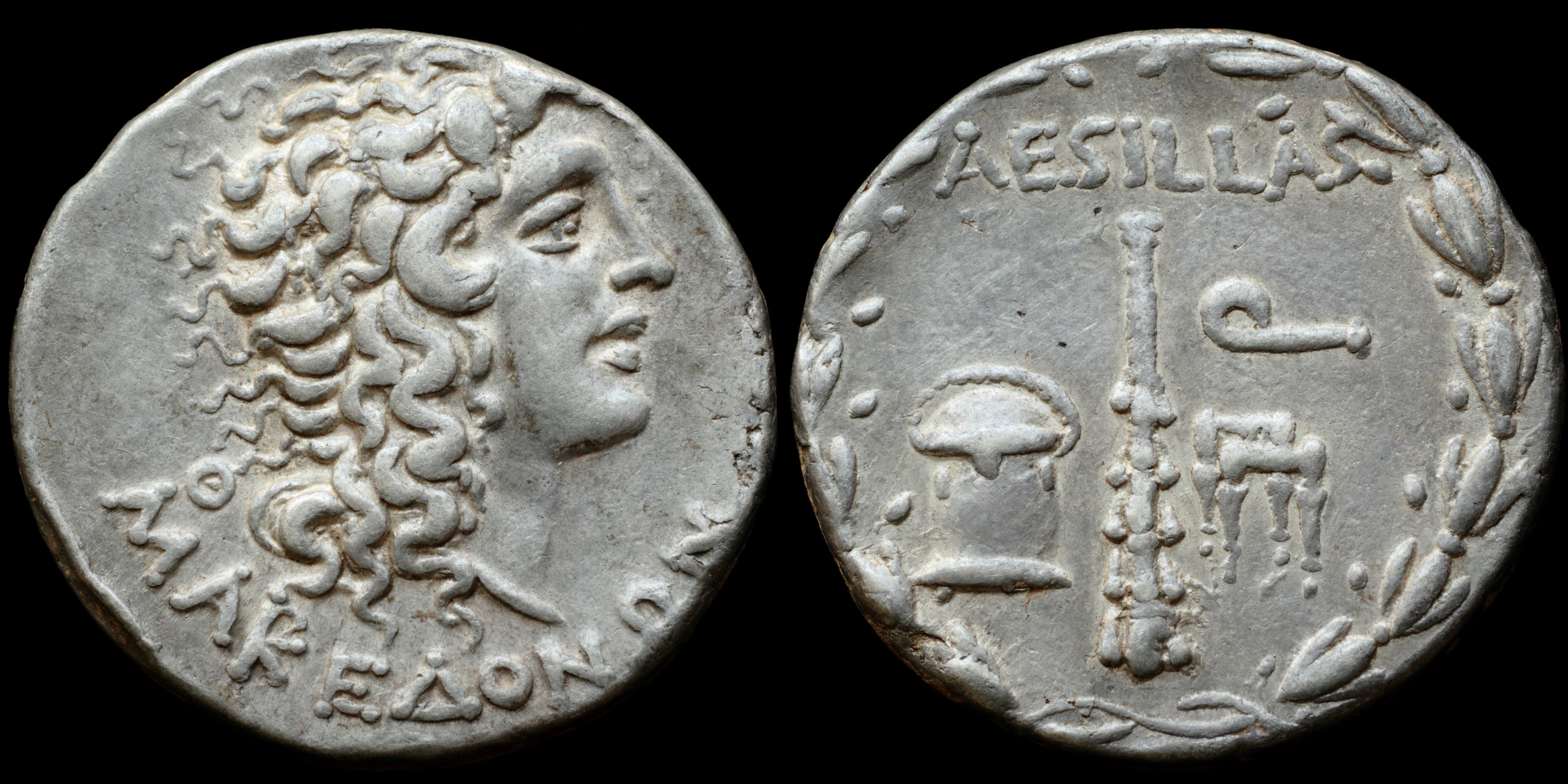
Reverse: club, money-chest (cista) left, quaestor's chair (sella curulis) right, all within laurel wreath; AESILLAS, Q
Die Orientation: -
Weight: 15.6 g
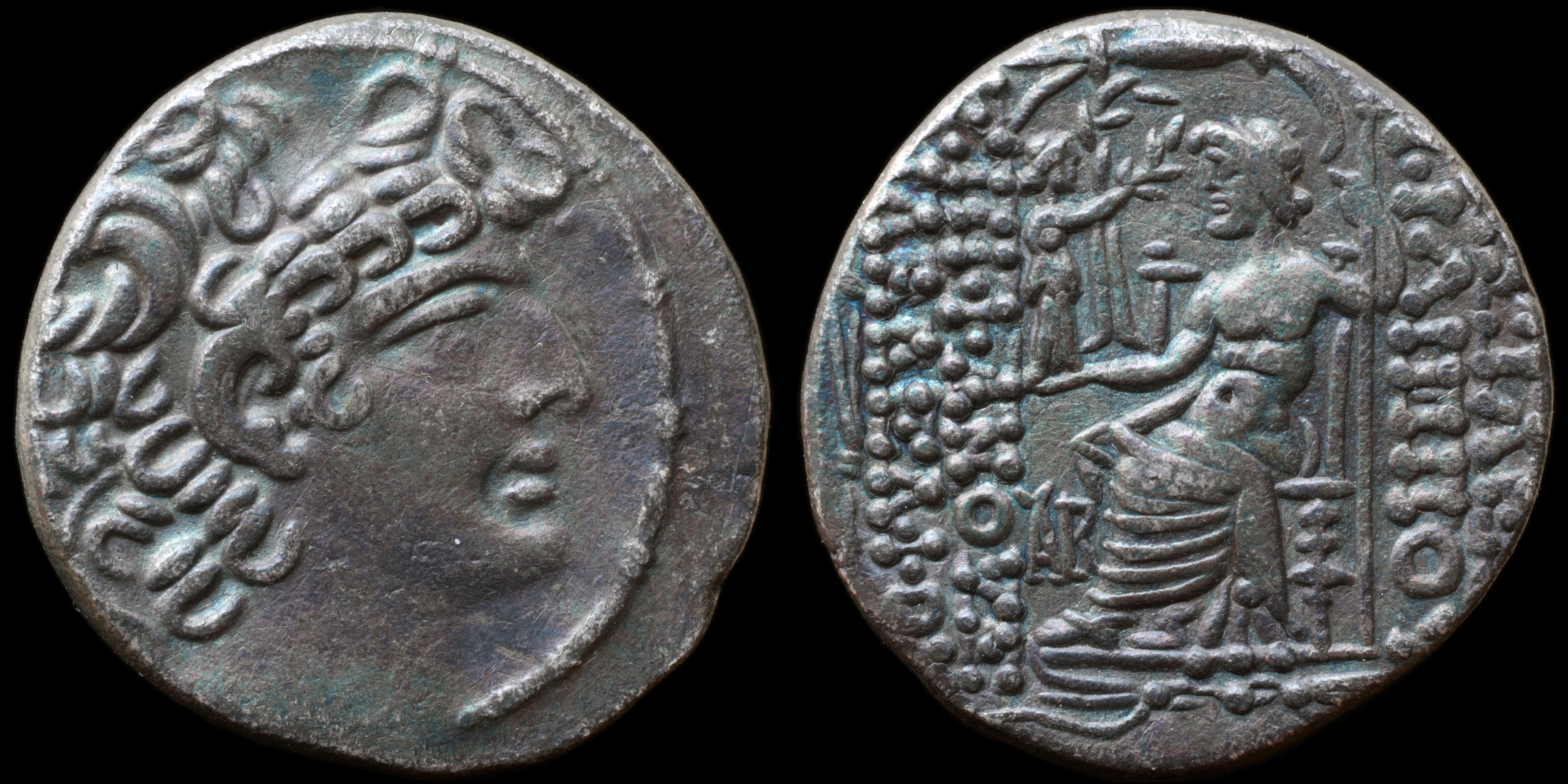
Reverse: Zeus seated left holding Nike and scepter; BAΣIΛEΩΣ / ΦIΛIΠΠOY // EΠIΦANOYΣ / ΦIΛAΔEΛΦOY / (AYΓB)
Die Orientation: -
Weight: 15.3 g
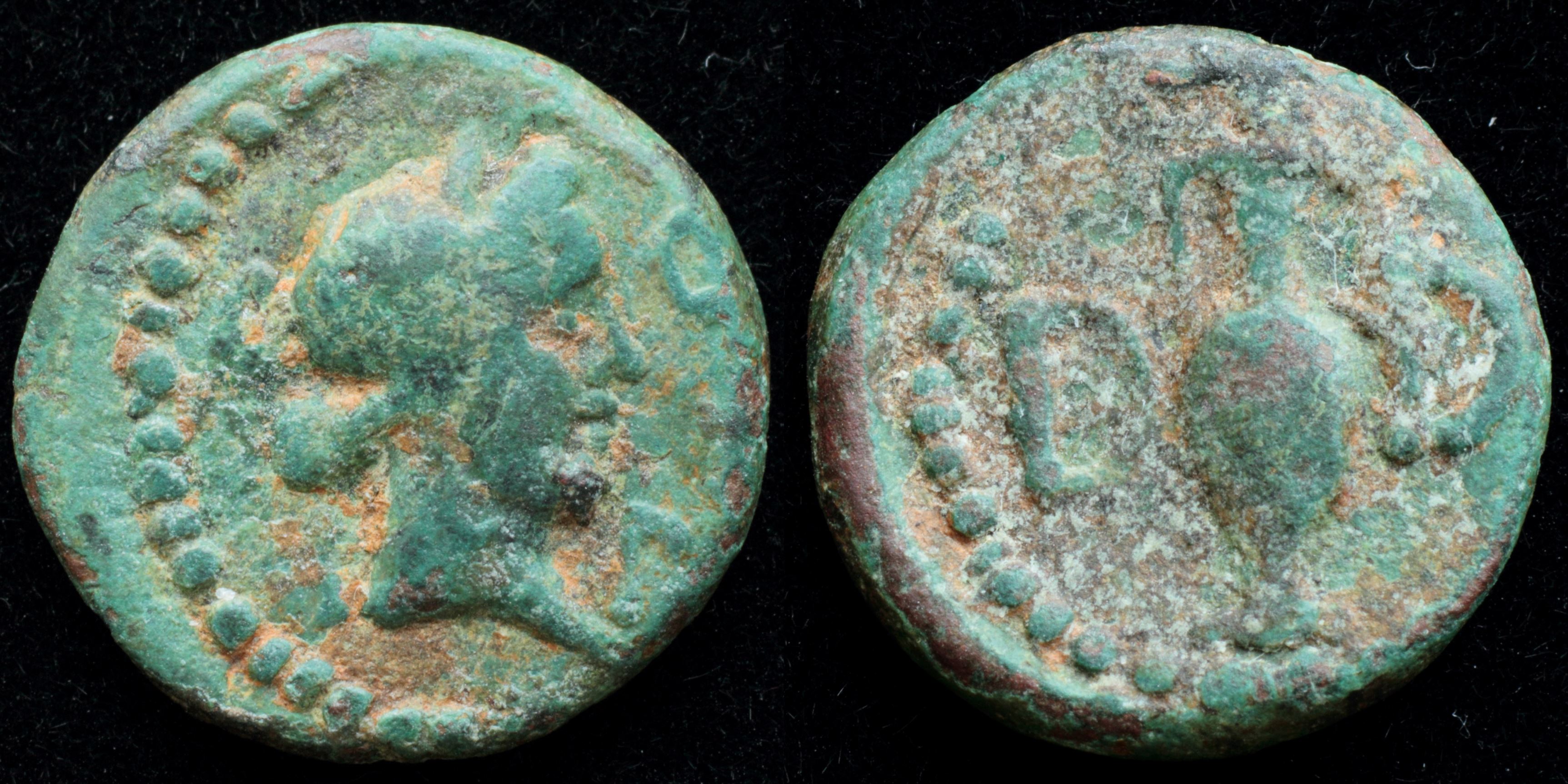
Reverse: praefericulum; D_D
Die Orientation: -
Weight: 2.7 g
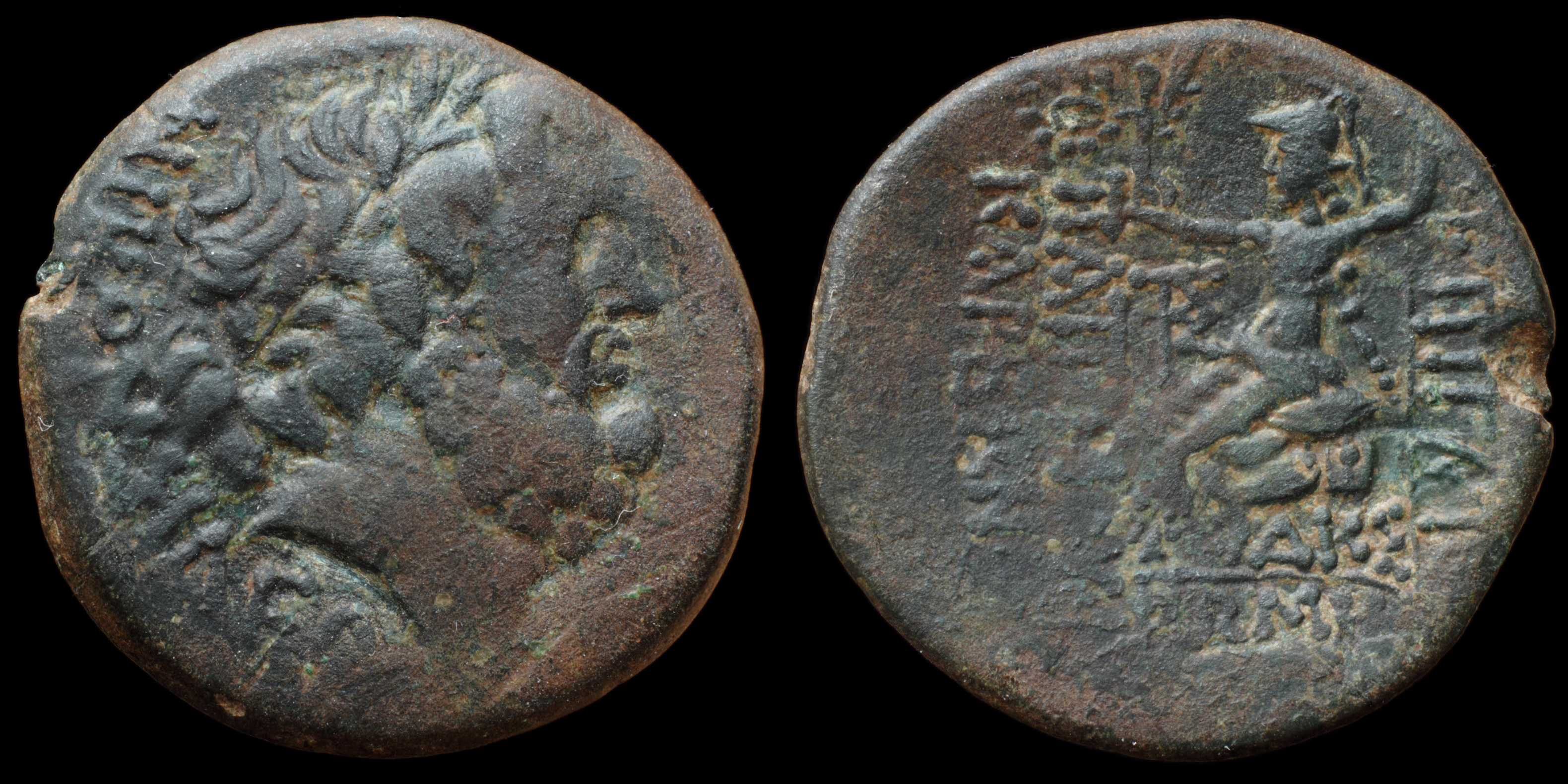
Reverse: Roma seated left on pile of shields holding Nike and spear; EΠIΓAIOY // ΠAΠIPIOY / KAPBΩNOΣ / ΔKΣ
Die Orientation: -
Weight: 7.1 g
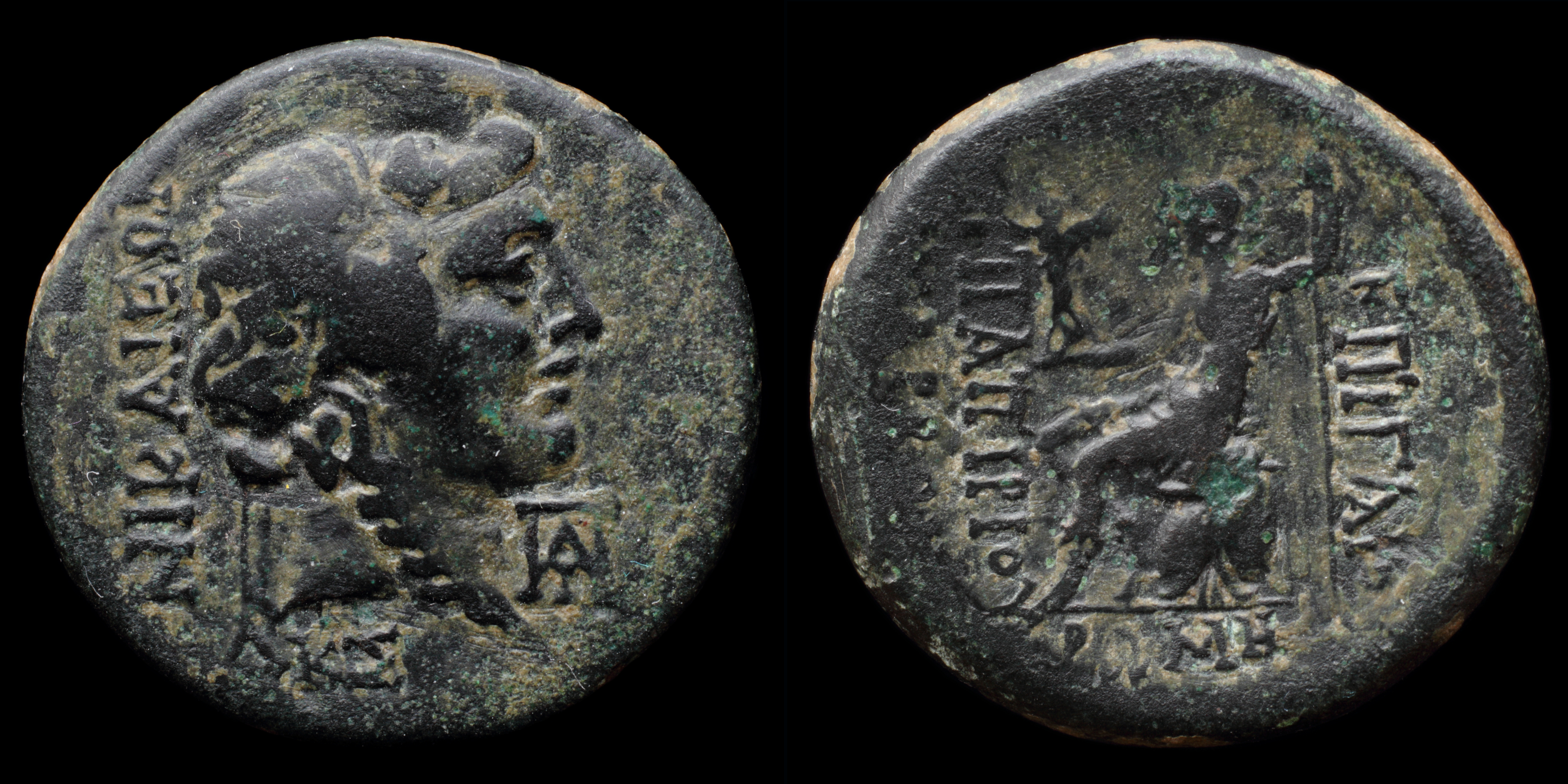
Reverse: Roma seated left on pile of shields holding Nike and spear; EΠI ΓAIOY // ΠAΠIPIOY / KAPBΩNOΣ // PΩMH
Die Orientation: -
Weight: 8.3 g
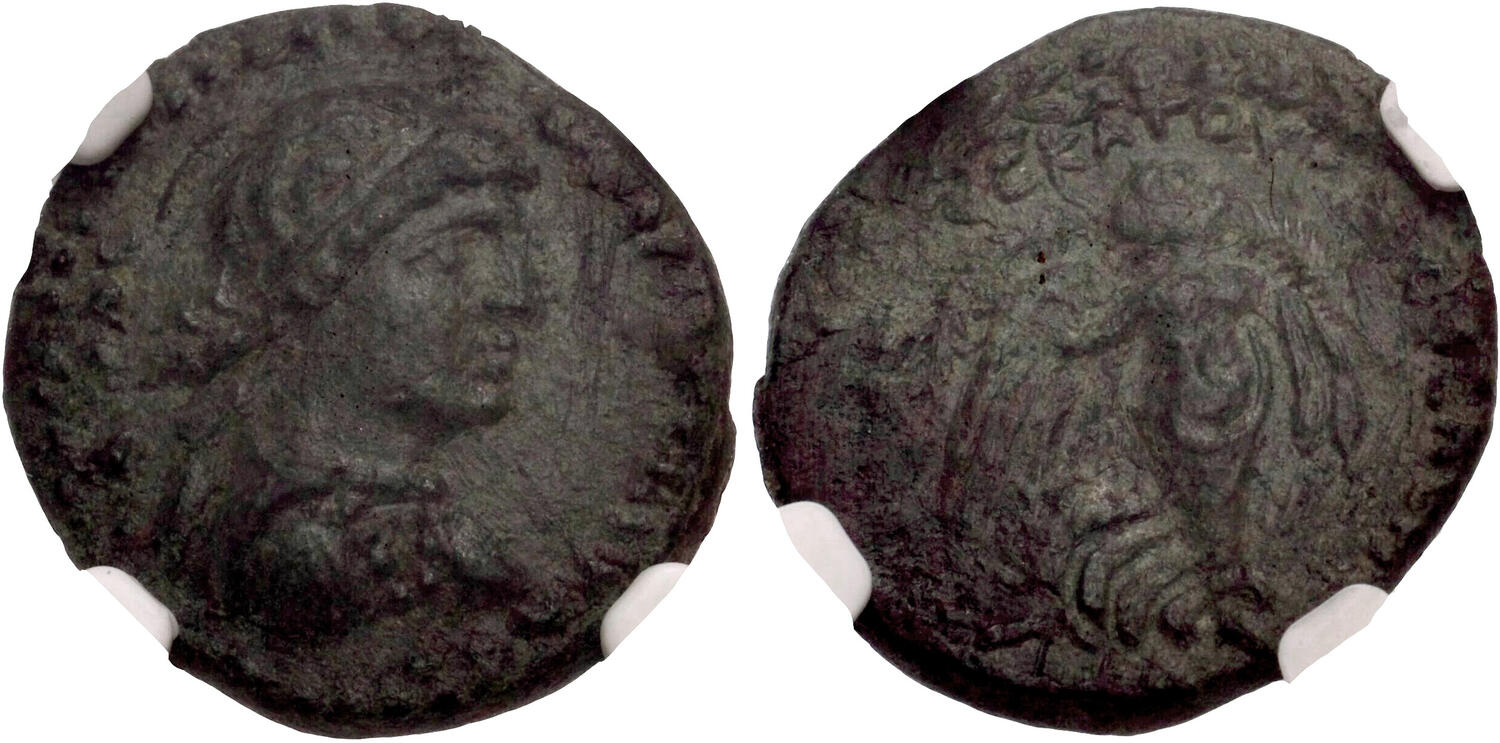
Reverse: Nike advancing right with palm and wreath; ƐΤΟΥϹ ΚΑ ΤΟΥ ΚΑΙ Ϛ ΘΕΑϹ ΝƐWΤƐΡΑϹ around; all within wreath.
Die Orientation: 11 H
Weight: 3.89 g
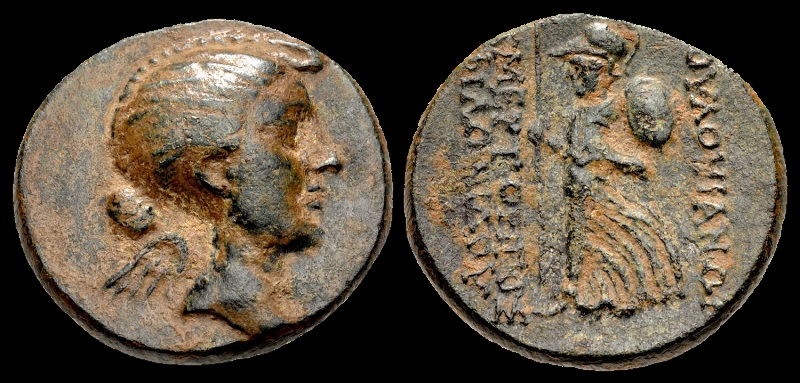
Reverse: Minerva standing left, holding shield and spear; [ΦOYΛOYIANON] in right field, [Z]MEPTOPIΓOΣ / [Φ]IΛΩNIΔOΥ] in two lines in left field.
Die Orientation: 12 H
Weight: 6.1 g
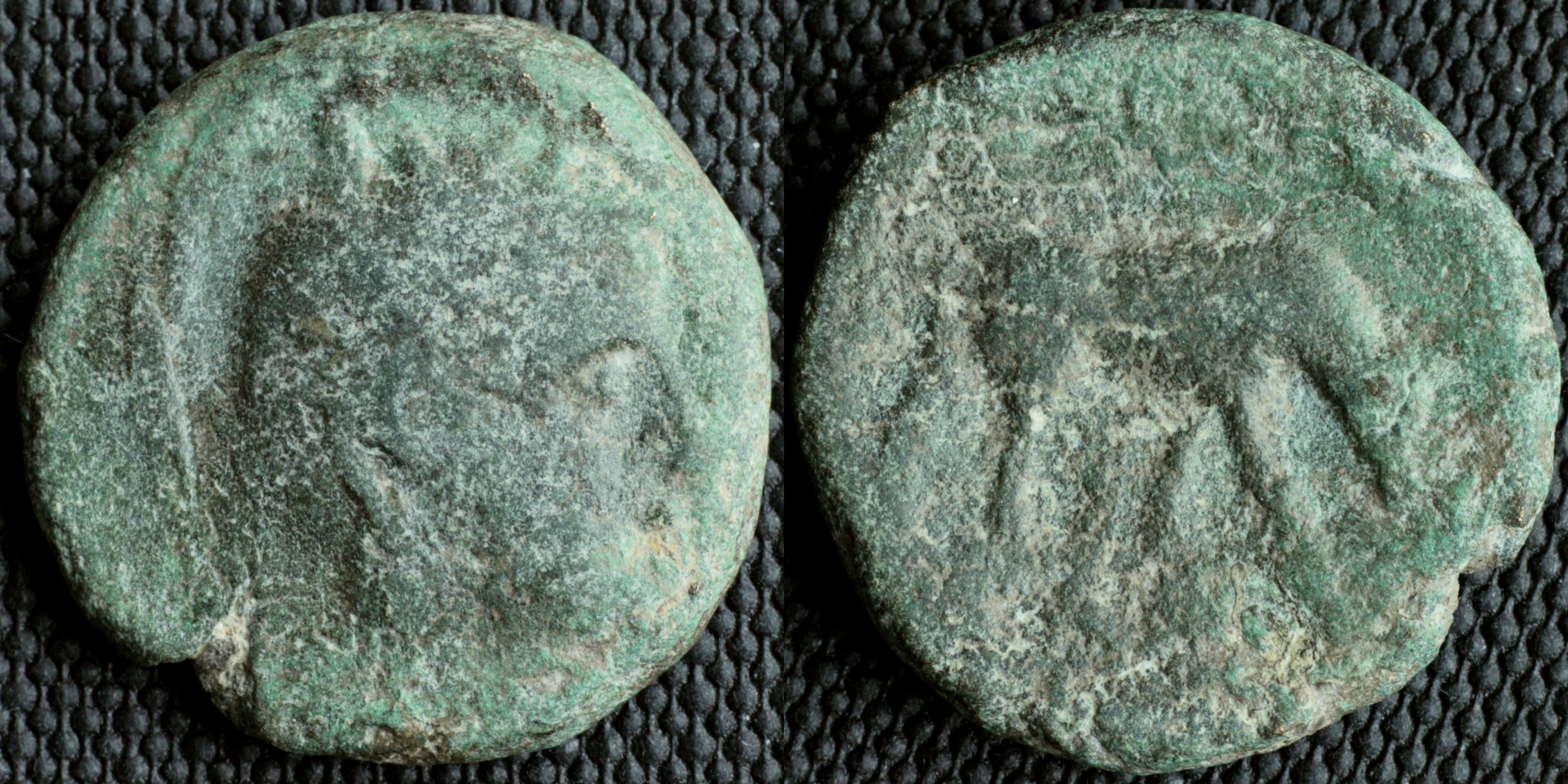
Reverse: feeding cow right; ΓΑMIOY (ΠΛY) / (BT), TAMIOY
Die Orientation: -
Weight: 5.67 g
.jpg)
Reverse: ΘEΣΣAΛONIKEΩN, Bare head of Octavian facing right; Δ below
Die Orientation: 10 H
Weight: 9.93 g
RPC notes that Touratsoglou considers this denomination as the equivalent of 2 Asses but considers it 1 As itself.
Howgego believes the NK countermark to be short of Nero Kaisar

Reverse: LE-PI flanking cornucopia; all within laurel wreath
Die Orientation: -
Weight: 0.36 g
Provenance: Leu Numismatik Web auction 8 (29 June, 2019), lot 611.
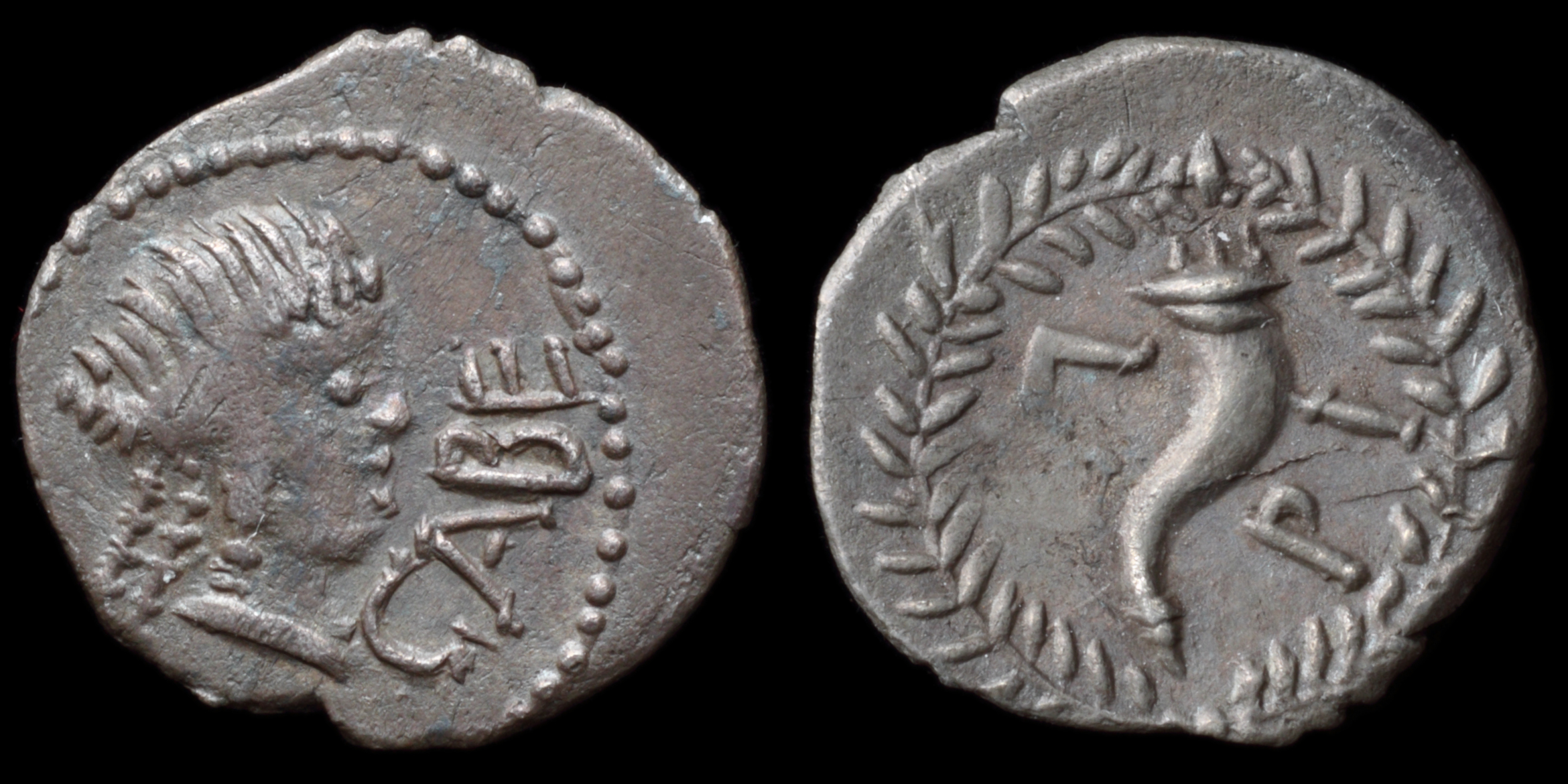
Reverse: cornucopia within wreath; LE_PI
Die Orientation: -
Weight: 0.4 g

Reverse: Bull reclining left on ground line; ϹΚΓ Μ (below), ΙΑΝ and kof (above).
Die Orientation: -
Weight: 9.09 g
.png)
Reverse: III•VIR• R•P•C - head of Octavia atop cista mystica, between twisting snakes.
Die Orientation: 12 H
Weight: 12.4 g
"Following the death of Octavia's first husband C. Claudius Marcellus in 40 BC, her marriage to Antony sought to seal the Pact of Brundisium in which it had been agreed that Octavian would assume control of the west and Antony of the east. The striking of this type cements the agreement before the people of Ephesus, an important city, later made the capital of Asia Minor by Augustus in 27 BC. Octavia spent two winters with Antony in Athens and in 37 BC assisted in securing the Triumvirate for another 5 years at the Pact of Tarentum. Following this, Antony returned to the east and, having left Octavia behind, lived with Cleopatra VII in Egypt. Although they divorced in 32 BC, after Antony's defeat at the Battle of Actium and subsequent suicide, Octavia raised all of his surviving children by Fulvia and Cleopatra, along with her own."
Provenance: Roma Numismatics, Auction XX (29-30 October 2020), lot 373.
.png)
Reverse: BAΛANEΩTΩN AP CY - Indian Dionysos in quadriga left.
Die Orientation: 3 H
Weight: 8.77 g
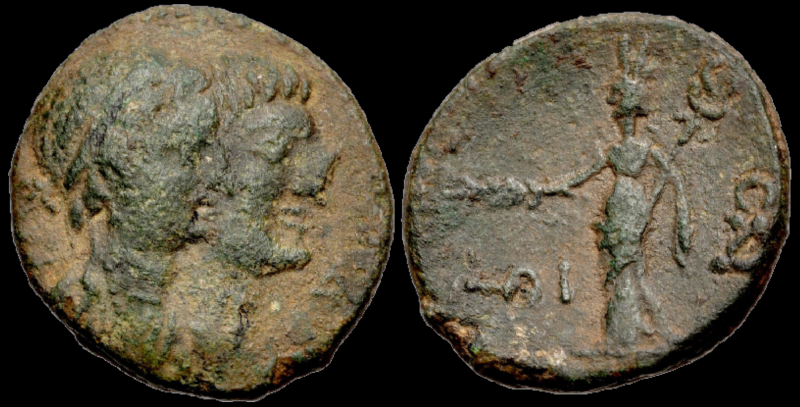
Reverse: Tyche of Dora standing left, holding palm frond and caduceus; L ΘΙ (date) to left; Ω/Δ to right.
Die Orientation: 12 H
Weight: 7.28 g
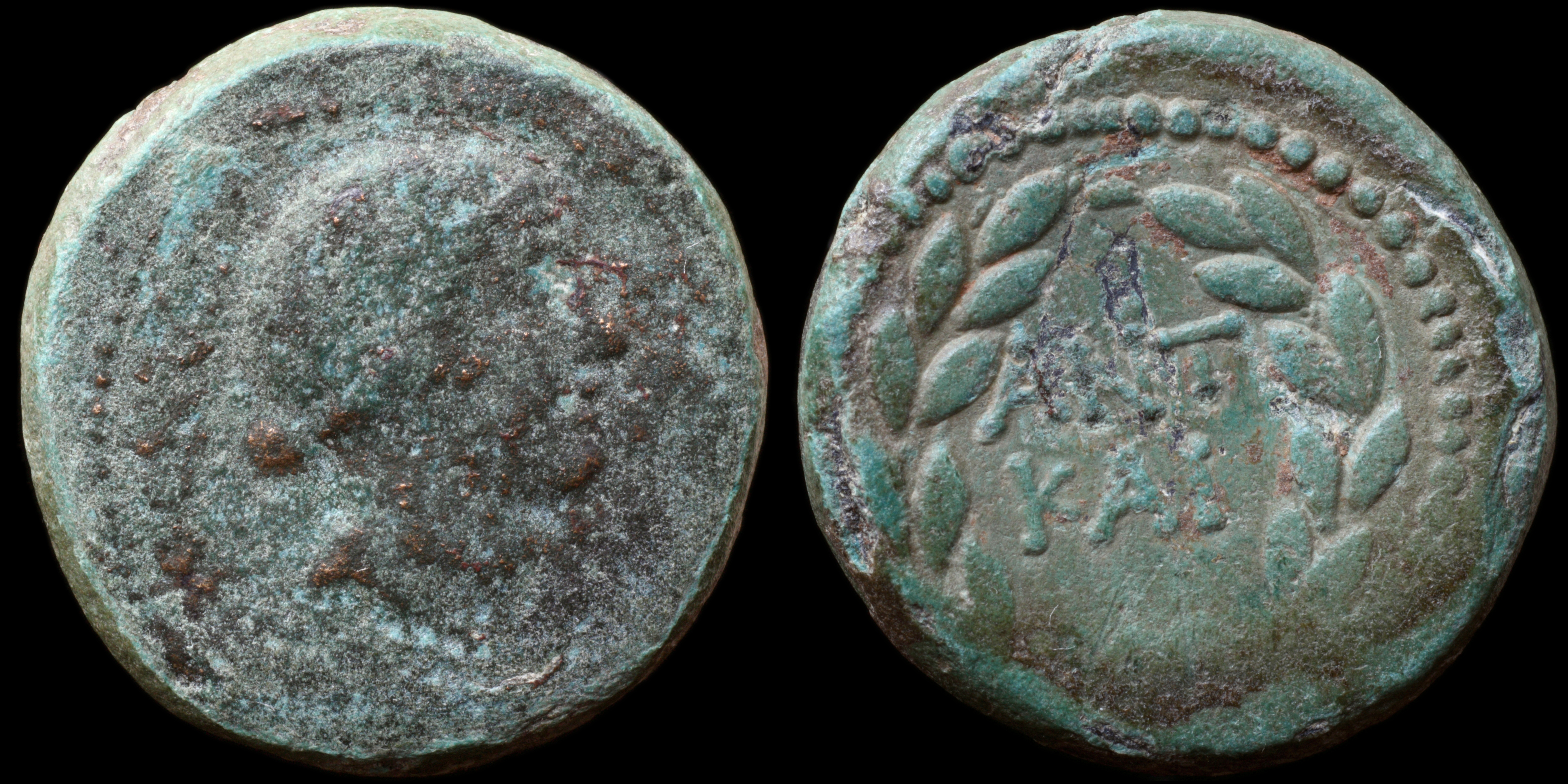
Reverse: legend within wreath; ANT / KAI
Die Orientation: -
Weight: 12.5 g
.jpg)
Reverse: Artemis Tauropulos riding bull right; AMΦΙΠOΛEΙΤΩΝ
Die Orientation: -
Weight: 10.38 g
.jpg)
Reverse: Fiscus, sella quaestoria, and hasta; Q below
Die Orientation: 12 H
Weight: 21.13 g
CNG has this to say:
This issue has previously been attributed to a Macedonian mint with the portrait identified either as Brutus (Friedlander), Caesar (Grant), or to the governor of of Syria, Gaius Sosius (in the trade). RPC presents a case for a Cilician or Syrian origin, supported by find data, with a suggestion that the portrait is Octavian. Issues of similar portrait style, very likely by the same engraver, include the "Princeps Felix" coinage from Cilicia (RPC 4082-3)
.png)
Reverse: Bellerophon mounted on Pegasus prancing to right, preparing to strike with his spear the Chimaera at his right. - L • CAECIL • NIGR/ C • HEIO P AM above, II VIR in exergue
Die Orientation: 9 H
Weight: 6.55 g

